Finite Element Solutions for Magnetic Field Problems in Terfenol-D Transducers
Abstract
1. Introduction
2. Configuration of Terfenol-D Transducers
3. Finite Element Solution for the Magnetic Field Problem
4. Bias Magnetic Field within the Terfenol-D Rod and the Magnetic Circuit of the Terfenol-D Transducer
5. Eddy Current Losses of the Terfenol-D Rod in the Terfenol-D Transducer
6. Prototypes and Tests
7. Conclusions
- (1).
- Three different configurations are simulated and analyzed to estimate the effect of generating the bias magnetic field within the Terfenol-D rod and the result of distributing the flux line along the magnetic circuit. A comparison of the simulation results indicates that the segmented stack configuration is the most effective way to produce the desired bias magnetic field. Especially for the long stack, making a majority of the domain satisfy the desired bias magnetic field range is achievable. When adopting this approach as a guideline, the nonsegmented configuration will also work so long as the Terfenol-D rod is appropriately short.
- (2).
- Three different configurations are simulated and analyzed to estimate the eddy current losses within the Terfenol-D rod. A comparison of the simulation results indicates that the configuration with digital slots is the most effective way to reduce the losses. It decreases the eddy current losses by 78.5% compared to a Terfenol-D rod of the same size with a single hole.
- (3).
- When the mechanical prestress is about 10 MPa and the bias magnetic field intensity is about 42 kA/m, the Terfenol-D rod will achieve an appropriate state and make the application of underwater projectors highly efficient.
- (4).
- Using the finite element method with the magnetic vector potential is an effective way to simulate magnetic field problems in Terfenol-D transducers. Its intuitional displays and rapid solutions help facilitate magnetic design of Terfenol-D transducers.
Author Contributions
Funding
Acknowledgments
Conflicts of Interest
References
- Butler, J.L.; Sherman, C.H. Transducers and Arrays for Underwater Sound, 2nd ed.; Springer: New York, NY, USA, 2016. [Google Scholar]
- Schmid, S.; Villanueva, L.G.; Roukes, M.L. Transduction. In Fundamentals of Nanomechanical Resonators; Springer International Publishing: Cham, Switzerland, 2016; pp. 115–147. [Google Scholar]
- Willard, B.S. Recent developments in large-scale, moving-coil underwater sound sources. J. Acoust. Soc. Am. 1981, 70, S19. [Google Scholar] [CrossRef]
- McLaughlin, E.A.; Moffett, M.B. Characteristics of variable-reluctance transducers as underwater acoustic projectors. J. Acoust. Soc. Am. 1989, 85, S92. [Google Scholar] [CrossRef]
- Sherman, C.H. Underwater Sound—A Review, I. Underwater Sound Transducers. IEEE Trans. Sonics Ultrason. 1975, 22, 281–290. [Google Scholar] [CrossRef]
- Mo, X.P.; Zhu, H.Q. Thirty years progress of underwater sound projectors in china. Sci. Sin. Phys. Mech. Astron. 2013, 43, 42–50. [Google Scholar] [CrossRef]
- Mo, X. Technical innovations with progress of underwater transducers. J. Shaanxi Norm. Univ. Nat. Sci. Ed. 2018, 46, 1–12. [Google Scholar]
- Berlincourt, D.A.; Curran, D.R.; Jaffe, H. Piezoelectric and Piezomagnetic Materials and Their Function in Transducers. In Physical Acoustics; Mason, W.P., Ed.; Academic Press: New York, NY, USA, 1964; Volume l, pp. 169–270. [Google Scholar]
- Engdahl, G. Handbook of Giant Magnetostrictive Materials; Academic Press: New York, NY, USA, 2000. [Google Scholar]
- Clark, A.E. Introduction of Highly Magnetostrictive Rare-Earth Materials. U.S. Navy J. Underw. Acoust. 1989, 27, 109–124. [Google Scholar]
- Claeyssen, F.; Lhermet, N.; Letty, R.L.; Bouchilloux, P. Actuators, transducers and motors based on giant magnetostrictive materials. J. Alloys Compd. 1997, 258, 61–73. [Google Scholar] [CrossRef]
- Clark, A.E. High Power Rare Earth Magnetostrictive Materials. J. Intell. Mater. Syst. Struct. 1993, 4, 70–75. [Google Scholar] [CrossRef]
- Seewll, J.M.; Kuhn, P.M. Opportunities and challenges in the use of Terfenol for sonar transducer. In Power Sonic and Ultrasonic Transducer Design; Hamonic, B., Decarpigny, J.N., Eds.; Springer: Berlin/Heidelberg, Germany, 1987; pp. 134–142. [Google Scholar]
- Meeks, S.W.; Timme, R.W. Rare earth iron magnetostrictive underwater sound transducer. J. Acoust. Soc. Am. 1997, 62, 1158. [Google Scholar] [CrossRef]
- Butler, S.C. A 2.5 kHz magnetostrictive tonpilz sonar transducer design. J. Acoust. Soc. Am. 2001, 109, 2459. [Google Scholar] [CrossRef]
- Chai, Y.; Mo, X.; Liu, Y.; Pan, Y.; Zhang, Y. Study on the driving element of gourd transducer. In Proceedings of the 2016 IEEE/OES China Ocean Acoustics (COA), Harbin, China, 9–11 January 2016. [Google Scholar]
- Mo, X.-P.; Zhu, H.-Q.; Liu, J.-G.; Cui, Z. Terfenol-d gaint magnetostrictive transducer simulation by finite element method. Appl. Acoust. 2000, 19, 5–8. [Google Scholar]
- Jung, E.; Kim, J. Finite element analysis for acoustic characteristics of a magnetostrictive transducer. Smart Mater. Struct. 2005, 14, 1273. [Google Scholar]
- Calkins, F.T.; Dapino, M.J.; Flatau, A.B. Effect of prestress on the dynamic performace of a Terfenol-D transducer. Smart Struct. Mater. Smart Struct. Integr. Syst. 1997, 3041, 293–304. [Google Scholar]
- Benatar, J.G.; Flatau, A.B. FEM implementation of a magnetostrictive transducer. Smart Struct. Mater. Smart Struct. Integr. Syst. 2005, 5764, 482–493. [Google Scholar]
- Benbouzid, M.E.H.; Reyne, G.; Meunier, G. Finite element modelling of magnetostrictive devices: Investigations for the design of the magnetic circuit. IEEE Trans. Magn. 1995, 31, 1813–1816. [Google Scholar] [CrossRef]
- Sheykholeslami, M.R.; Hojjat, Y.; Cinquemani, S.; Ghodsi, M. Design and simulation of multi-resonance sonic transducer using Terfenol-D. In Proceedings of the Conference on Sensors and Smart Structures Technologies for Civil, Mechanical, and Aerospace Systems, San Diego, CA, USA, 9–12 March 2015. [Google Scholar]
- Talebian, S.; Hojjat, Y.; Ghodsi, M.; Karafi, M.R. Study on classical and excess eddy currents losses of Terfenol-D. J. Magn. Magn. Mater. 2015, 388, 150–159. [Google Scholar] [CrossRef]
- Huang, W.; Wu, X.; Li, Y.; Weng, L. Analysis of high frequency dynamic magnetic properties and loss properties of Terfenol-D. Chin. J. Sci. Instrum. 2020, 41, 1–7. [Google Scholar]
- Claeyssen, F.; Boucher, D.; Anifrani, K.; Bossut, R.; Decarpigny, J.N. Analysis of magnetostrictive transducers by the ATILA finite element code. J. Acoust. Soc. Am. 1989, 85, S90. [Google Scholar] [CrossRef]
- Boozer, A.H. Ohm’s law for mean magnetic fields. J. Plasma Phys. 1986, 35, 133–139. [Google Scholar] [CrossRef]
- Zheng, Y.C.; Wang, Y.; He, J.G.; Huang, W. Permeance calculation and magnetic circuit design based on magnetic field division. Mach. Electron. 2006, 2006, 11–13. [Google Scholar]
- Silvester, P.; Chari, M.V.K. Finite element solution of saturable magnetic field problems. IEEE Trans. Power Appar. Syst. 1970, PAS-89, 1642–1651. [Google Scholar] [CrossRef]
- Otilia, E.; Enescu, D.; Stan, M.-F.; Ionel, M. Finite Element Analysis of Stationary Magnetic Field. In Finite Element Analysis—New Trends and Developments; Intech: Rijeka, Croatia, 2012; pp. 102–130. [Google Scholar]
- Haus, H.A.; James, R.M. Introduction to Electroquasistatics and Magnetoquasistatics. In Electromagnetic Fields and Energy; Prentice-Hall: Englewood Cliffs, NJ, USA, 1989. [Google Scholar]
- Andrzej, D. Finite element modeling of magnetic field in electrical machines: Scalar or vector potential formulation part II: Comparative description of methods. In Proceedings of the 2016 13th Selected Issues of Electrical Engineering and Electronics (WZEE), Rzeszow, Poland, 4–8 May 2016; pp. 1–6. [Google Scholar]
- Bastos, J.; Sadowski, N. Finite element method. In Magnetic Materials and 3D Finite Element Modeling; CRC Press: Boca Raton, FL, USA, 2013. [Google Scholar]
- Biro, O.; Preis, K. On the use of the magnetic vector potential in the finite-element analysis of three-dimensional eddy currents. IEEE Trans. Magn. 1989, 25, 3145–3159. [Google Scholar] [CrossRef]
- Calkins, F.T. Design, Analysis, and Modeling of Terfenol-D Transducers. Ph.D. Thesis, Iowa State University, Ames, IA, USA, 1997. [Google Scholar]
- Zheng, X.J.; Liu, X.E. A nonlinear constitutive model for Terfenol-D rods. J. Appl. Phys. 2005, 97, 053901. [Google Scholar] [CrossRef]
- Kaltenbacher, M.; Schneider, S.; Simkovics, R.; Landes, H.; Lerch, R. Nonlinear finite element analysis of magnetostrictive transducers. In Proceedings of the Smart Structures and Materials 2001: Modeling, Signal Processing, and Control in Smart Structures, Newport Beach, CA, USA, 4–8 March 2001. [Google Scholar]
- Butler, J.L. Eddy current loss factor series for magnetostrictive rods. J. Acoust. Soc. Am. 1987, 82, 378. [Google Scholar] [CrossRef]
- Faye, W.; Meunier, G.; Guerin, C.; Ramdane, B.; Labie1, P.; Dupuy, D. 2D and 3D homogenization of laminated cores in the frequency domain. Eur. Phys. J. Appl. Phys. 2013, 64, 24517. [Google Scholar] [CrossRef]


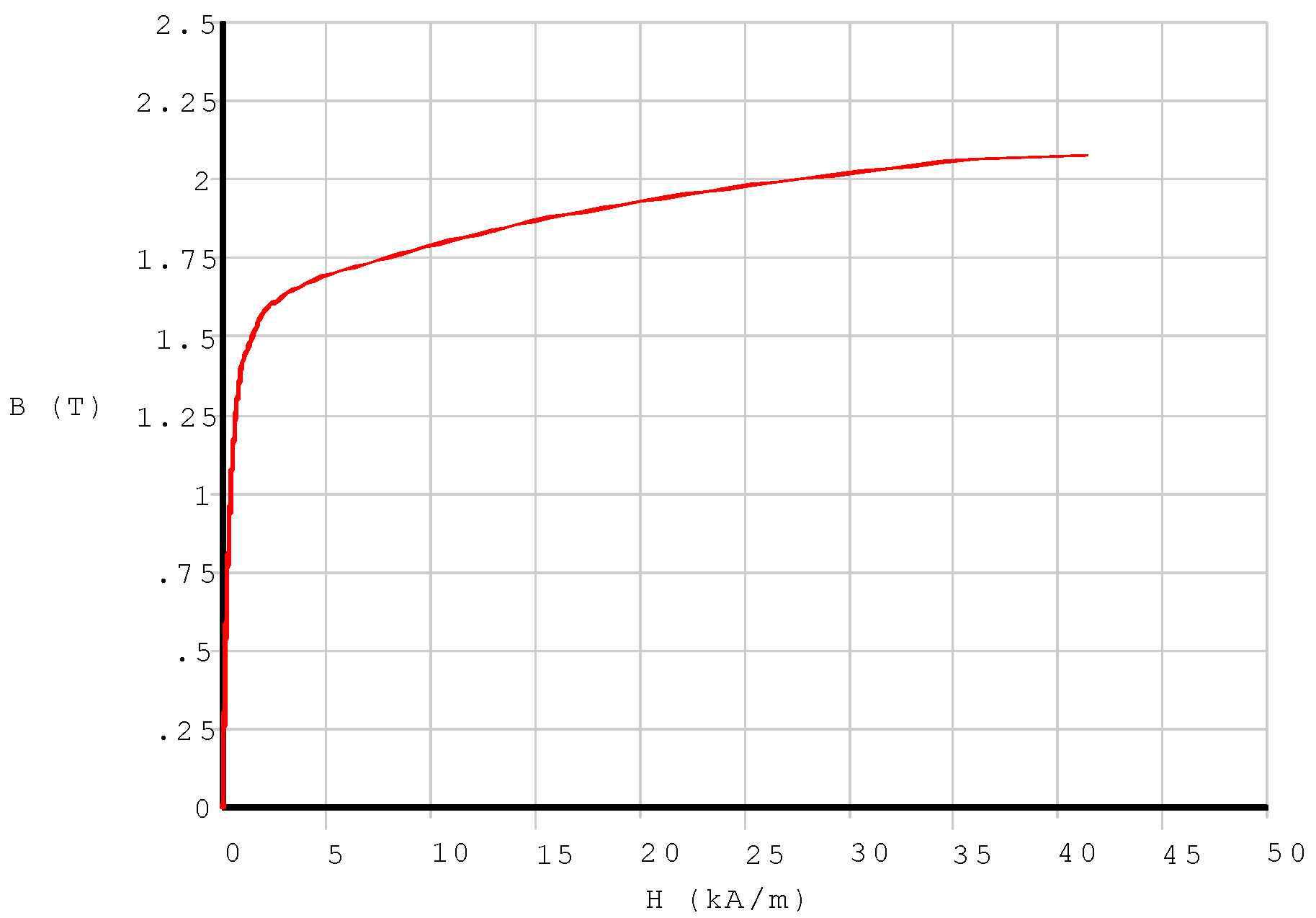
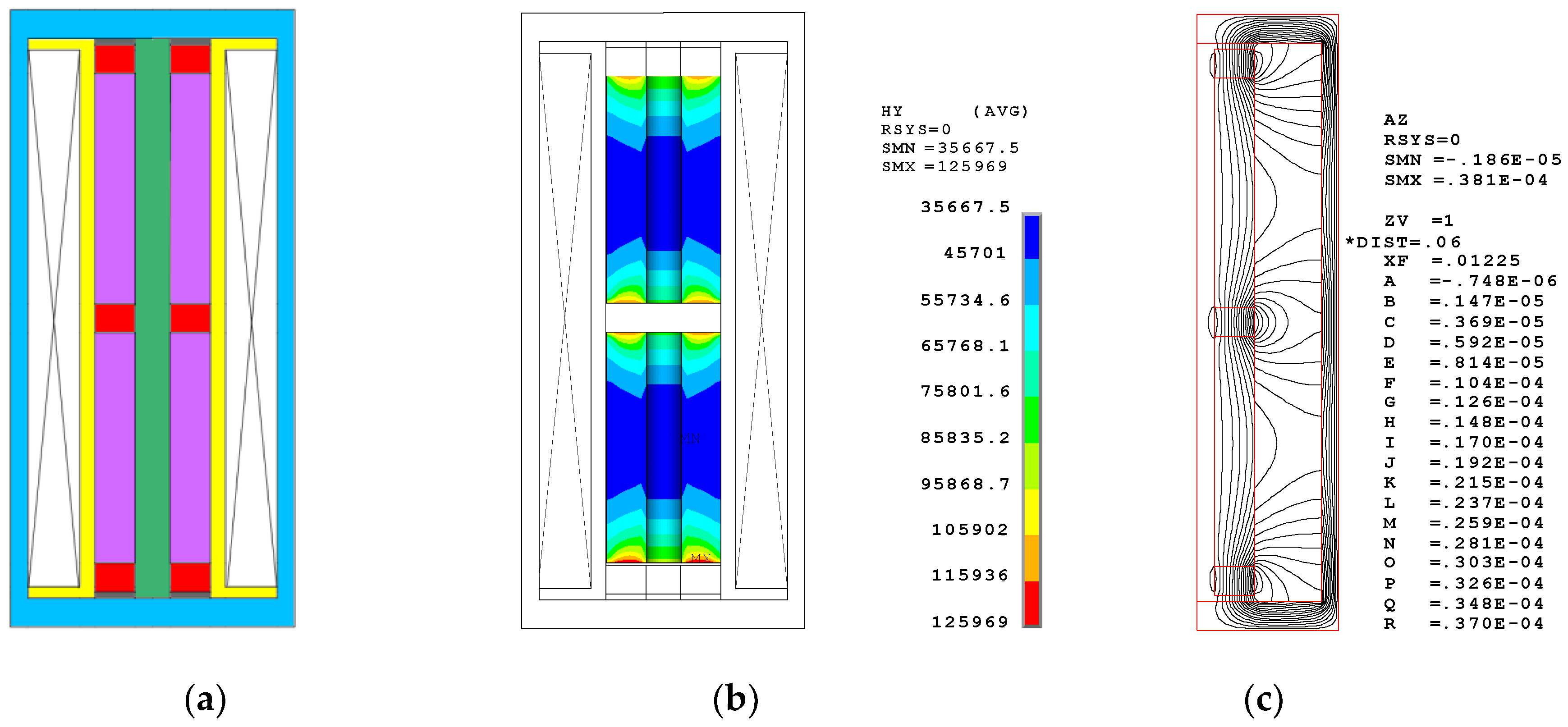
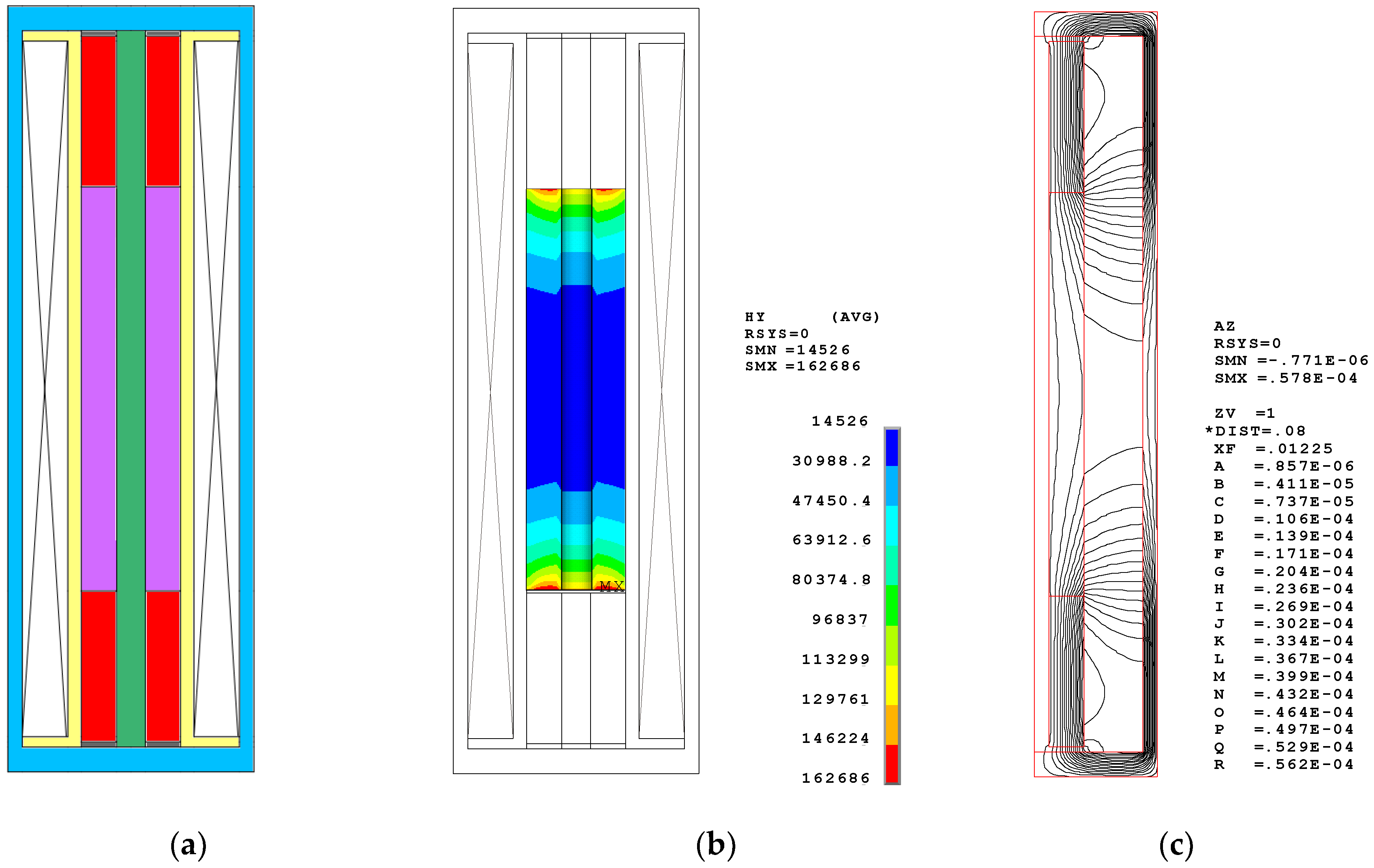
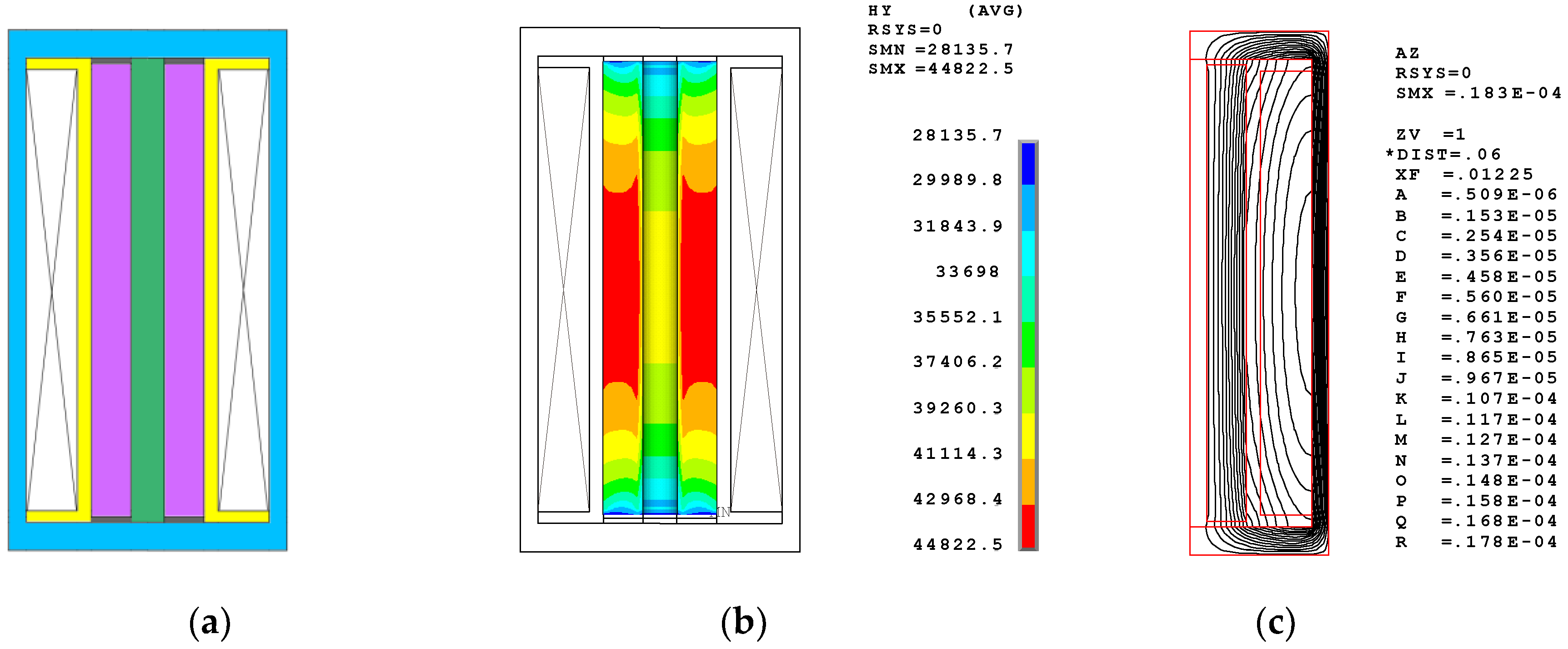
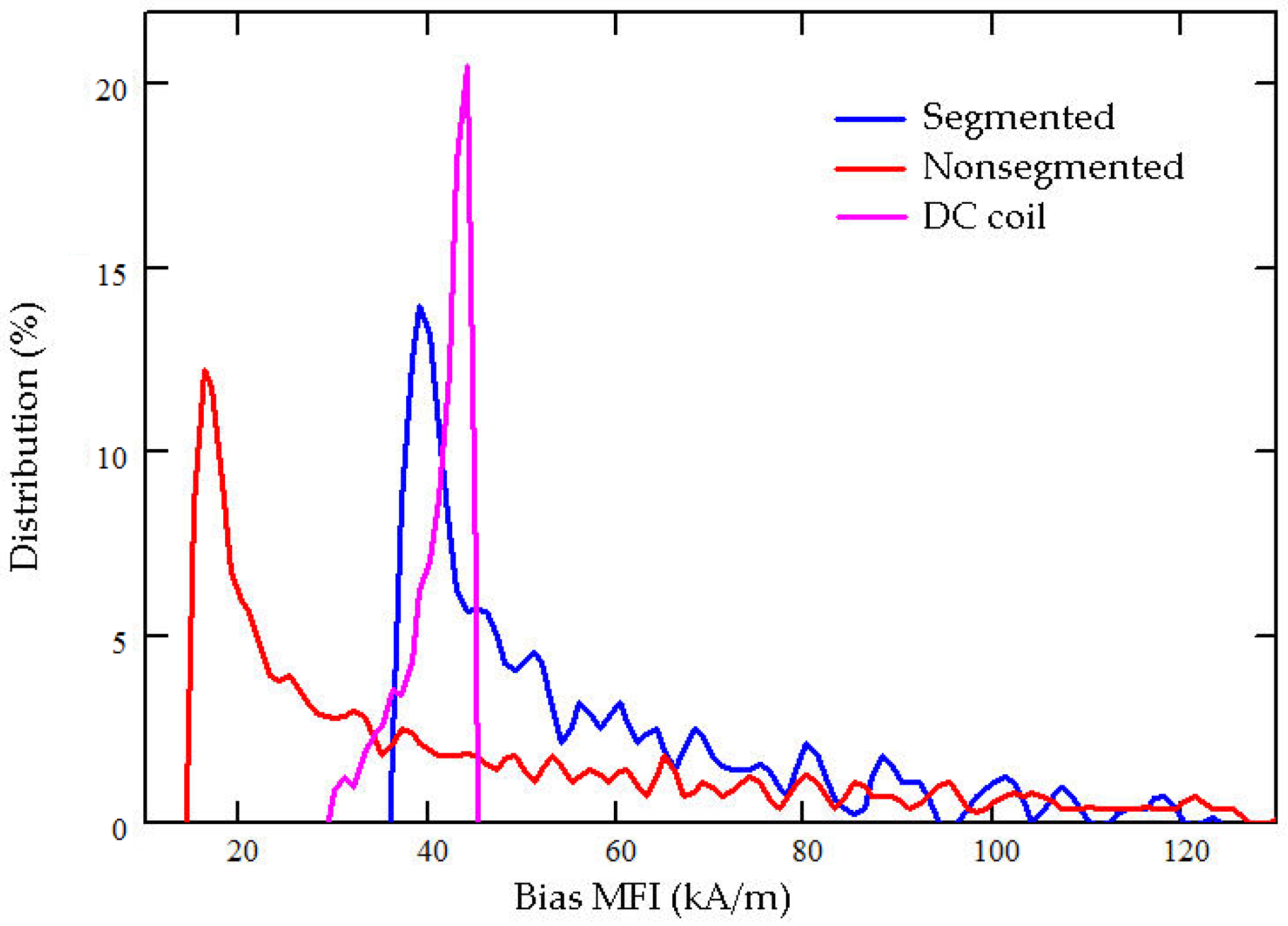
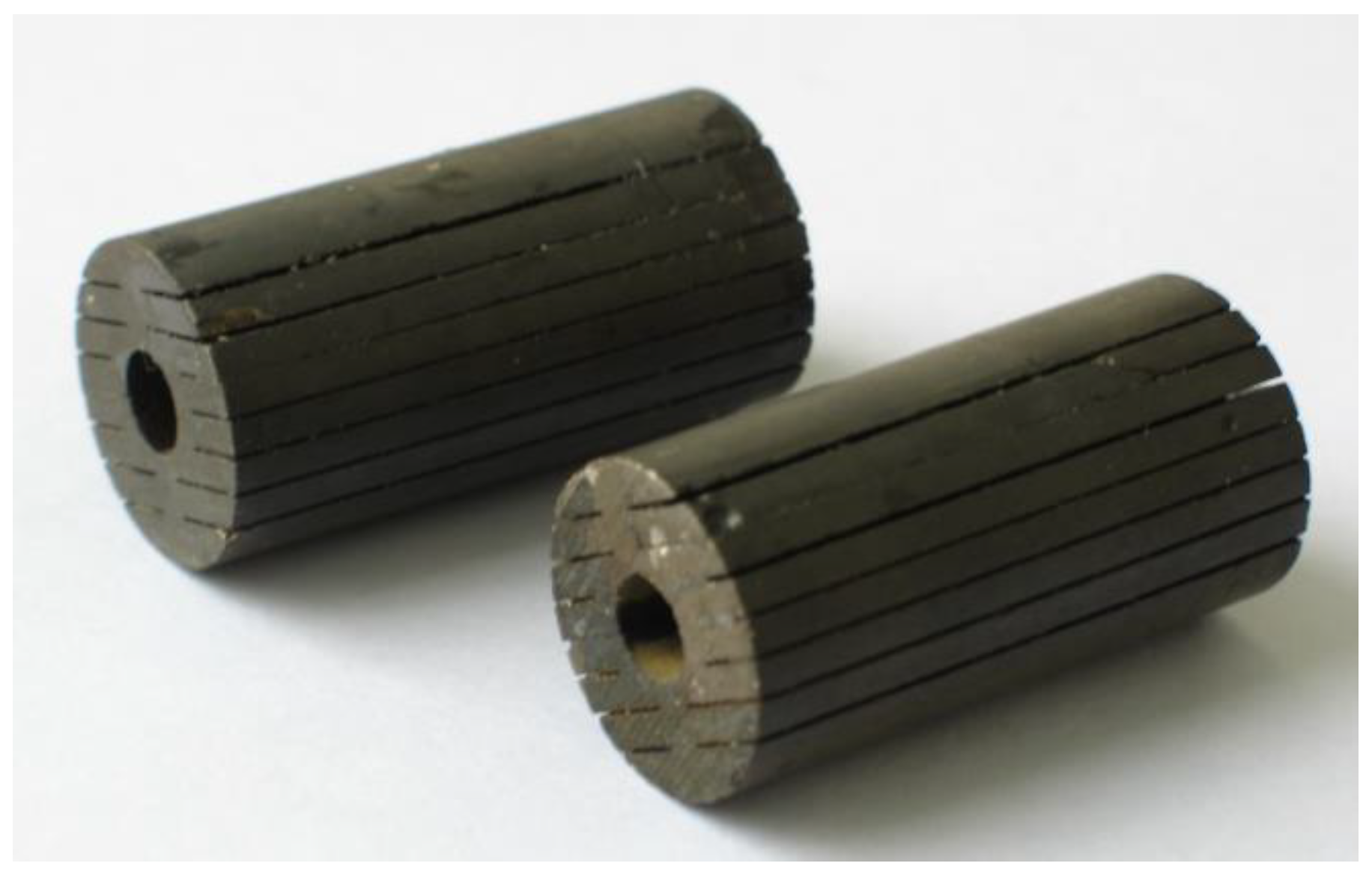


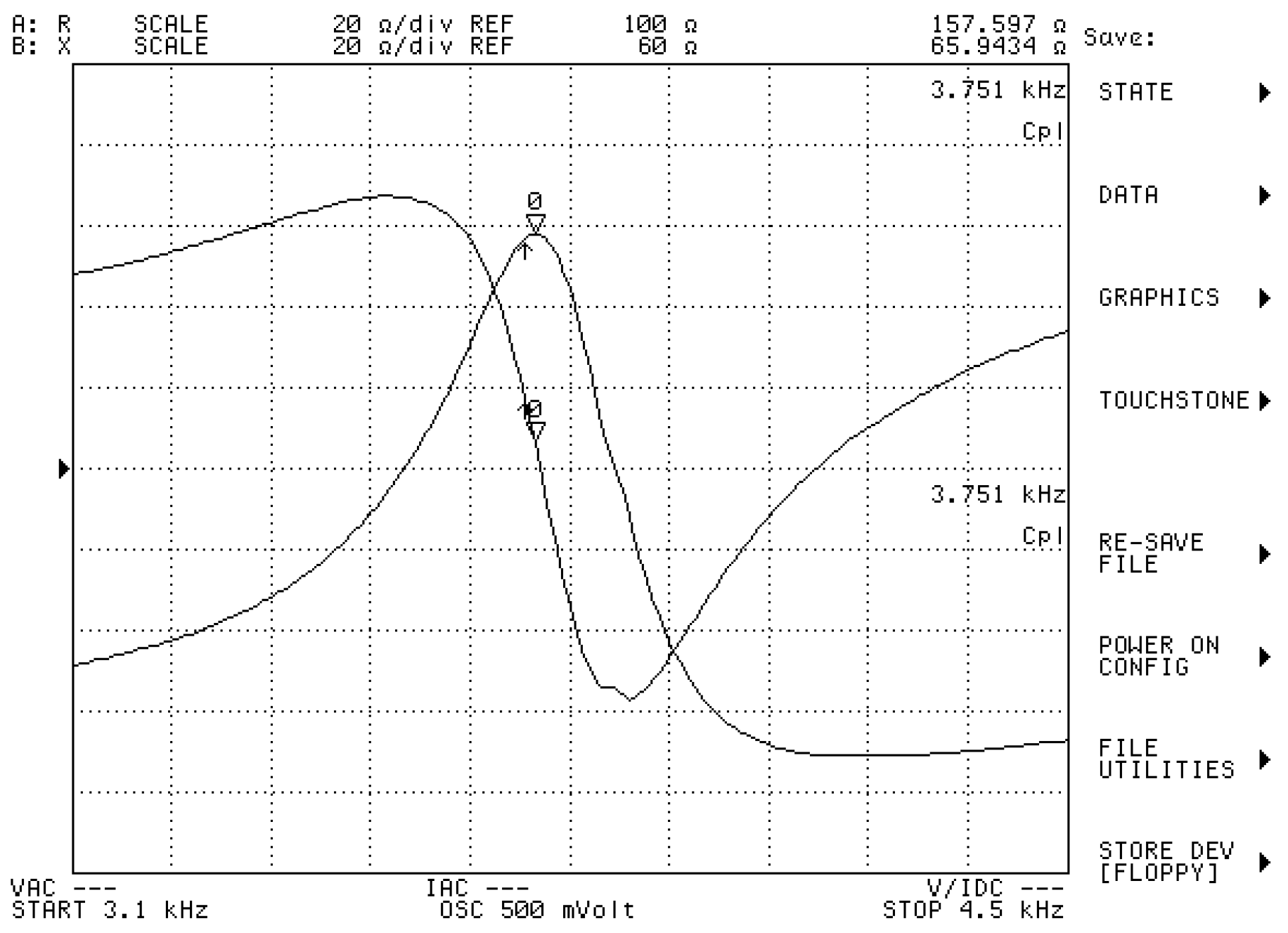
| Components | Materials | Description | Quantity |
|---|---|---|---|
| Head mass | Aluminum alloy | Radiating surface diameter | φ70 mm |
| Laryngeal diameter | φ54 mm | ||
| Length | 20 mm | ||
| Magnetostrictive rod | Terfenol-D | Outer diameter | φ20 mm |
| Inner diameter | φ6 mm | ||
| Length of single piece | 40 mm | ||
| Pieces | 2 | ||
| Permanent magnets | NdFeB | Outer diameter | φ20 mm |
| Inner diameter | φ6 mm | ||
| Length of single piece | 5 mm | ||
| Pieces | 3 | ||
| Coil | Enameled copper wire | Turns | 682 |
| Wire diameter | 1 mm | ||
| Magnetic return path | Electromagnetism pure iron | Outer diameter of cylinder | φ49 mm |
| Inner diameter of cylinder | φ43 mm | ||
| Length of single piece | 97 mm | ||
| Diameter of shields | φ49 mm | ||
| Length of shields | 5 mm | ||
| Pieces of shields | 2 | ||
| Prestressed bolt | Nonmagnetic steel | Size | M5 |
| Tail mass | Nonmagnetic steel | Diameter | φ54 mm |
| Length | 55 mm |
| Components | Materials | Property |
|---|---|---|
| Magnetostrictive rod | Terfenol-D | Relative permeability: 5 |
| Permanent magnets | NdFeB | Relative permeability: 1.14 |
| Coercive force: 935 kA/m | ||
| Magnetic return path | Electromagnetism pure iron | B-H curve (See Figure 3) |
| Other sections | Air | Relative permeability: 1 |
| Quantity | Standard Deviation | Mean MFI (A/m) | Min MFI (A/m) | Max MFI (A/m) | Terfenol-D Size (mm) | NdFeB Size (mm) |
|---|---|---|---|---|---|---|
| Segmented | 20,835 | 56,112 | 35,668 | 125,969 | (φ20 × φ6 × 40) | (φ20 × φ6 × 5) |
| × 2 pcs | × 3 pcs | |||||
| Nonsegmented | 34,520 | 46,105 | 14,526 | 162,686 | (φ20 × φ6 × 80) | (φ20 × φ6 × 30) |
| × 1 pcs | × 2 pcs | |||||
| DC coil | 3814 | 40,566 | 28,136 | 44,822 | (φ20 × φ6 × 80) | |
| × 1 pcs |
© 2020 by the authors. Licensee MDPI, Basel, Switzerland. This article is an open access article distributed under the terms and conditions of the Creative Commons Attribution (CC BY) license (http://creativecommons.org/licenses/by/4.0/).
Share and Cite
Teng, D.; Li, Y. Finite Element Solutions for Magnetic Field Problems in Terfenol-D Transducers. Sensors 2020, 20, 2808. https://doi.org/10.3390/s20102808
Teng D, Li Y. Finite Element Solutions for Magnetic Field Problems in Terfenol-D Transducers. Sensors. 2020; 20(10):2808. https://doi.org/10.3390/s20102808
Chicago/Turabian StyleTeng, Duo, and Yatian Li. 2020. "Finite Element Solutions for Magnetic Field Problems in Terfenol-D Transducers" Sensors 20, no. 10: 2808. https://doi.org/10.3390/s20102808
APA StyleTeng, D., & Li, Y. (2020). Finite Element Solutions for Magnetic Field Problems in Terfenol-D Transducers. Sensors, 20(10), 2808. https://doi.org/10.3390/s20102808





